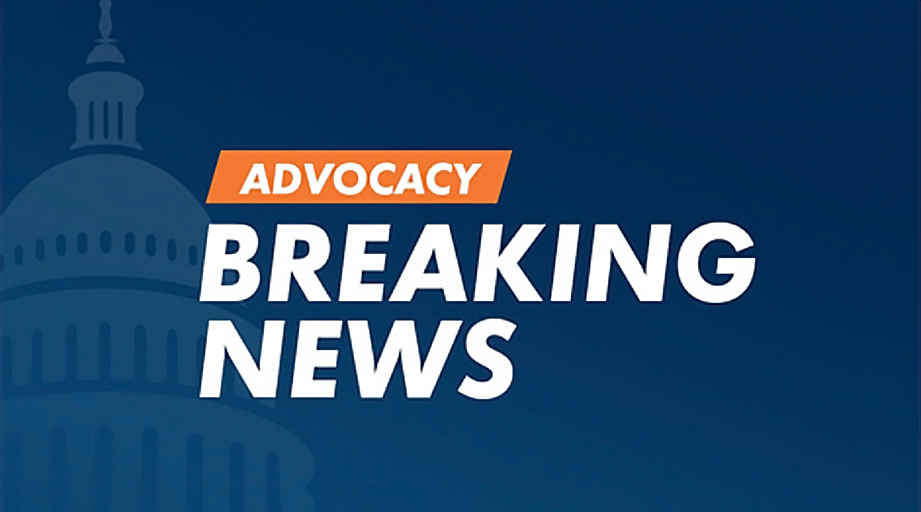
Quick action by the pharmacy team at UHS Binghamton General Hospital in New York helped save a man’s life after he collapsed during a pharmacy renovation project.
Jason James, supervising pharmacist at the 220-bed community hospital, identified the man as a contractor who was working in the pharmacy area June 10 to prepare for the installation of a new carousel system.
“Around lunchtime,” James said, “we heard this loud bang in the back of the pharmacy.”
Pharmacy technician Natalie Leuci looked around the corner and saw the contractor lying on the floor near a ladder. She called for help, and James and pharmacist Brett Stankevich ran to the scene.
“My first thought was that he had fallen off the ladder and maybe knocked the wind out of himself, because we could see he was struggling to breathe,” James said. “Shortly after that, he went into respiratory arrest. He just stopped breathing.”
Within seconds after being summoned to the site, Stankevich put his cardiopulmonary resuscitation (CPR) and advanced cardiovascular life support (ACLS) training to work and started administering chest compressions. James helped keep the man’s airway open.
“Brett actually was the leader of the whole thing,” James emphasized. “I was his assistant. He just did a great job.”
While Stankevich and James continued the resuscitation, pharmacist Josh Thorpe called the hospital’s internal emergency number to request a medical response team. Pharmacy Technician Supervisor Gabrielle Webb ran upstairs to retrieve the nearest crash cart and defibrillator.
“Then the medical team started to show up. And after about three rounds of CPR, we finally were able to bring him around, based on a defibrillation that occurred after the third round,” Stankevich said.
UHS Binghamton General Hospital isn’t equipped to perform coronary angioplasty, so the contractor was quickly transported nearby UHS Wilson Medical Center for evaluation and catheterization. Hospital and health-system leadership soon reached out to the man, who was recovering well, to let him know that the Binghamton pharmacy team was going to be specially recognized for its actions.
“The gentleman said to tell the pharmacy, tell every one of them that was involved, ‘Thank you so much for what they did,’” James said.
Stankevich has observed and participated in code events for 17 years, and he’s familiar with how responders work as a team to revive patients. If the pharmacy emergency had been a typical inpatient code event, he would have been responsible for drug therapy while someone else — probably a nurse — administered chest compressions.
“This was more of an outpatient setting, where you have a witnessed or unwitnessed fall at a random place, and you have to be the responder,” Stankevich said.
He noted that he’s been in that position before; several years ago, while attending church, he administered CPR to an infant who had stopped breathing.
“Fortunately, a colleague of ours from the emergency room happened to be there that day, too,” Stankevich said. “We saved that infant’s life and got them transported.”
The American Heart Association (AHA) estimates that more than 360,000 cardiac arrests occur outside of hospitals in the United States each year, and more than 90% of people with an out-of-hospital cardiac arrest die. According to AHA, immediate CPR can double or triple the odds of surviving an out-of-hospital cardiac arrest.
ASHP’s Cindy Huang, deputy editor in chief of AHFS, knows firsthand that immediate CPR can mean the difference between life and death. Moments after Huang collapsed from a heart attack while competing in a race this past April, an intensive care unit physician and fellow race participant ran to her side and started CPR.
Huang and the physician described the experience in a video created for the American Medical Association.
“I see this as an opportunity to promote bystander CPR,” Huang said. “Not only should all healthcare providers be trained on this important lifesaving skill, but I think everyone should.”
The physician, a veteran of many resuscitations, also described his surprise at how personal and moving the experience was when it occurred outside of the hospital.
Stankevich, despite his long familiarity with code events, likewise learned something new when he was face-to-face with the contractor as he awakened.
“He was very scared when he started to come around,” Stankevich recalled. “He tried to get up. And when I was able to call him by name, and I was able to say that you are around doctors, he immediately settled down. I really saw the importance of addressing people by their name, or by who they are, and not just as a patient.”
Looking back, he said the incident underscored the value of basic and advanced cardiopulmonary life support training for pharmacy staff and the need to immediately assess and respond to a medical emergency.
“As an ACLS professional, you do have that ownership,” Stankevich said. “For me, it feels like this was our patient, and he’s alive today because of the professionalism of the UHS pharmacy department, no doubt. And that feels really great.”







